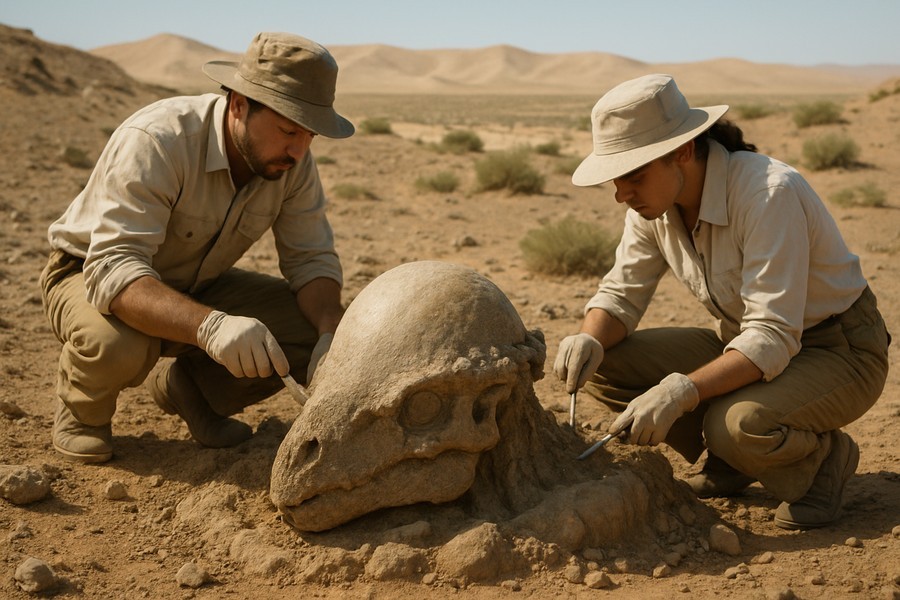
Discovery of Unique Skull Reveals More About Ancient Dinosaurs
Remarkable prehistoric findings were made recently when the oldest and most intact fossil of a certain dome-headed dinosaur was unearthed. This dinosaur belongs to the pachycephalosaur group, recognized by their distinctive rounded skulls. The discovery was made in the barren lands of the Gobi Desert, located within the borders of Mongolia.
The fossil is from a young member of a species that was not known to scientists before. The research team has decided to name this newly discovered dinosaur Zavacephale rinpoche. The fossil's age is estimated to be between 108 and 115 million years old.
The Enigmatic Pachycephalosaurs
There's a certain mystery surrounding the pachycephalosaurs. These dinosaurs were two-legged plant eaters that roamed the earth during the Cretaceous period in Asia and North America. They stand out due to their unique, bony skulls, which have sparked interest and fascination among the public. They've even been featured in popular media, such as the well-known dinosaur movie series.
Despite their fame, very little is known about these creatures. Most of the fossils discovered to date have been mainly of their skulls. As one researcher noted, all the pachycephalosaur fossils in the world wouldn't fill up more than two bathtubs. This scarcity of fossils makes each new discovery incredibly valuable.
More than Just a Skull
The Zavacephale rinpoche fossil found in Mongolia is significant, as it is not just a skull. It offers a lot more detail about the dinosaur's anatomy. The discovered fossil is said to be the "most skeletally complete" of its kind, providing important clues about the creature's physical structure.
The Zavacephale rinpoche specimen found was estimated to be at least 2 years old and about 3 feet long. Most of its skeleton, including its long legs, short arms, and small hands, was uncovered. Furthermore, stones known as gastroliths were found among its remains. These stones were likely swallowed by the dinosaur to help grind plant matter that it consumed.
Signature Skull Dome
Even though the specimen was not fully grown, its skull already had the thickened bone characteristic of a pachycephalosaur. This detail is crucial in understanding the development of the dinosaur's cranial dome. However, the purpose of the dome is still a mystery. Some theories suggest that these dinosaurs might have used their domes for head-to-head combat or as a display to attract mates.
Ancient Origins
This fossil discovery is significant because it is older by about 15 million years than any other pachycephalosaur fossils discovered so far. This could help researchers understand more about the evolution of these dinosaurs. The Zavacephale rinpoche, although smaller than later pachycephalosaurs, displays features that were present in its descendants. This indicates that these peculiar creatures had their distinctive dome for a long time.
The discovery of Zavacephale rinpoche is indeed a giant leap in our understanding of these fascinating creatures. It not only provides valuable insights into their anatomy and life but also helps us trace their evolutionary journey. As we continue to dig deeper into our planet's crust, who knows what other prehistoric secrets we might unearth?
